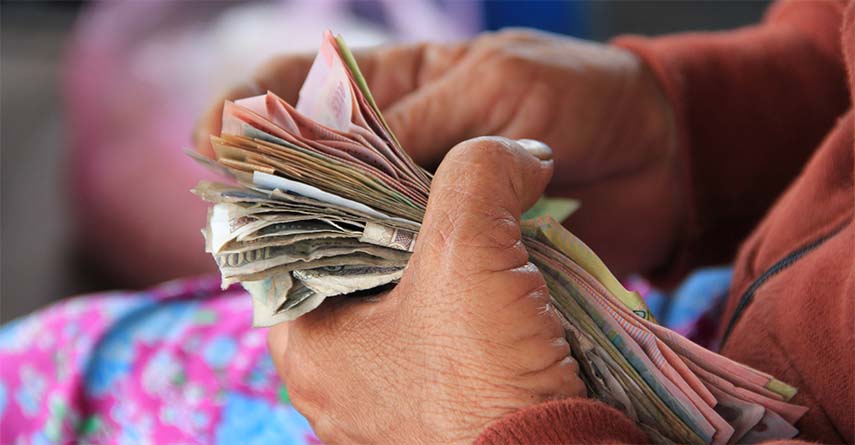South Africans took home more money in January 2018, although the income growth was slightly slower than previous months, according to BankservAfrica’s January Take-home Pay and Private Pensions indices.
The BankservAfrica Take-home Pay Index shows average formal sector pay was R14 675 in January, 5,8% higher than January 2017 before inflationary adjustment, says Shergeran Naidoo, head: stakeholder engagement at BankservAfrica.
This increase was lower than December’s growth of 7.3%. However, when adjusted in line with inflation, take-home pay increased by 1.2% on a year-on-year basis, and represents the slowest increase in five months.
“This positive real increase for money banked by employees’ points to a gradual increase in living standards for most formally employed people,” says Mike Schüssler, chief economist at Economists dotcoza.
The typical formal employee experienced a real increase of 2.2% – nearly double that of the average take-home pay increase. The share of employees who receive up to R4 000 per month declined to 13,7% in January 2017 compared to 15,2% in January 2018. This is a 7,8% decline in the number of employees receiving less than R4 000 per month over the last year.
Those earning monthly salaries between R12 000 and R16 000 now stand at 474 700 people, which is more than the 436 900 who earn below R4 000. While the number of employees taking home between R12 000 and R16 000 only grew by 1,2% , this number is still higher than the number of earners in the low-income category.
BankservAfrica’s Private Pensions Index shows pensions increased substantially in January with the average pension reaching R7 072, according to Naidoo. For the first time, the average pension increased to over R7 000 per month in nominal terms.
On an after-inflation basis, the annual increase was 4,8% – the biggest increase since September 2015. The average South African pension paid reached 48,3% of the average take-home pay for the first time since BankservAfrica’s average pensions paid data commenced in mid-2012.
The pension paid into the bank account of the typical (median) pensioner was R4 896 in January and R4 654 after taking inflation into account. Again, the real pension paid increased substantially faster than inflation with a real increase of 3,8% in January 2018 compared to January 2017.
“The data indicates that pensions paid have increased faster than take-home pay in eight of the last 12 months. Pensioners are also becoming a bigger part of the South African economy,” says Schüssler.
A quick review of the salary and pensions indices shows that the real increase average was 1% more than in 2016, says Naidoo. Real take-home pay declined in the first two months of the year and then gradually increased. In the last three months of 2017, take-home pay increased by 2,8% on average after inflation.
Private pensions paid increased by 1,7% on average in real terms and when compared with 2016, says Naidoo. This growth was experienced the most in the last part of 2017.
“Pensions paid, as measured by BankservAfrica, fared better than take-home salaries and remains a positive driving force for growth in the South African economy,” says Schüssler.

